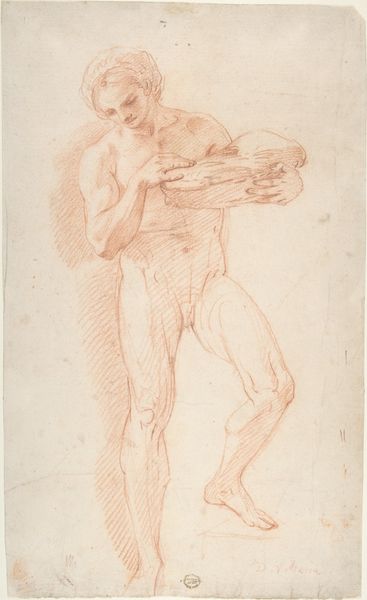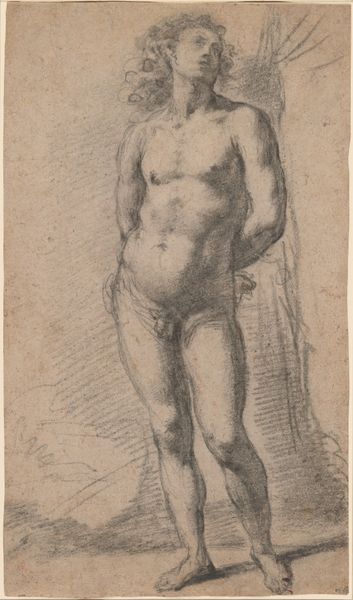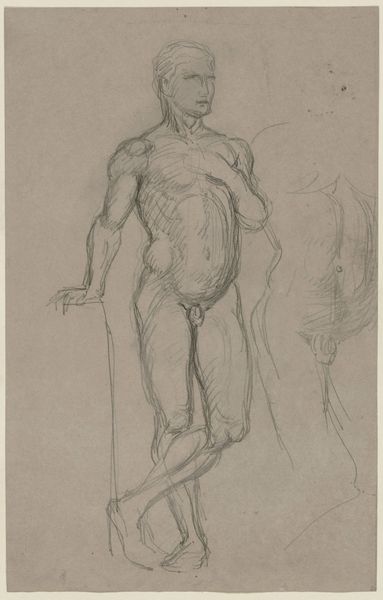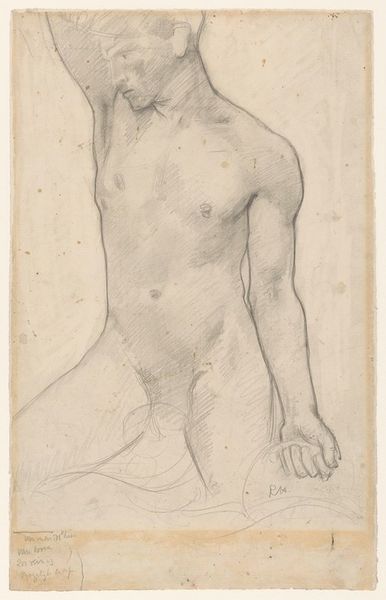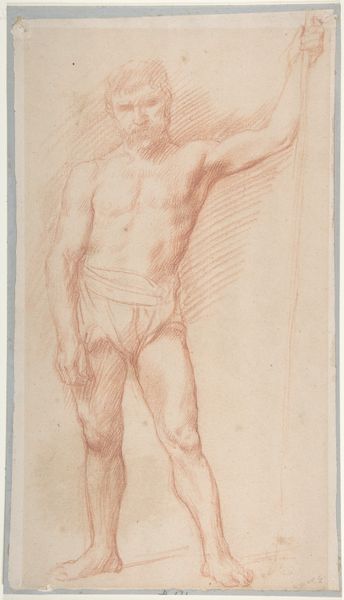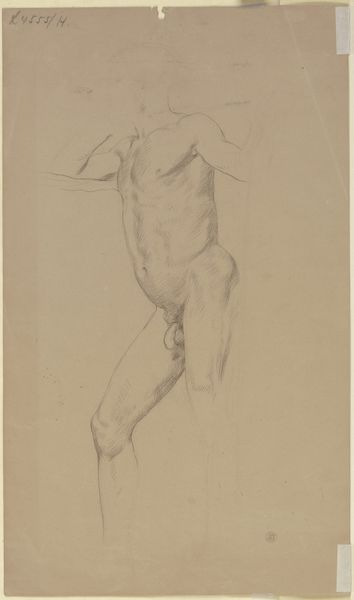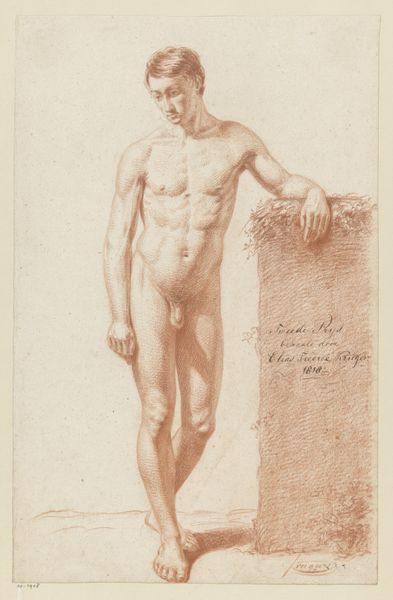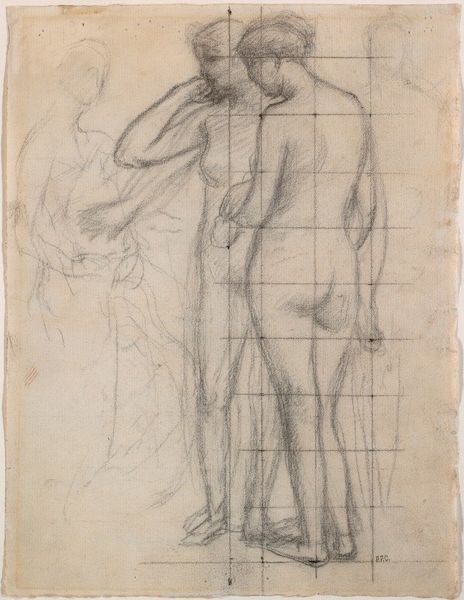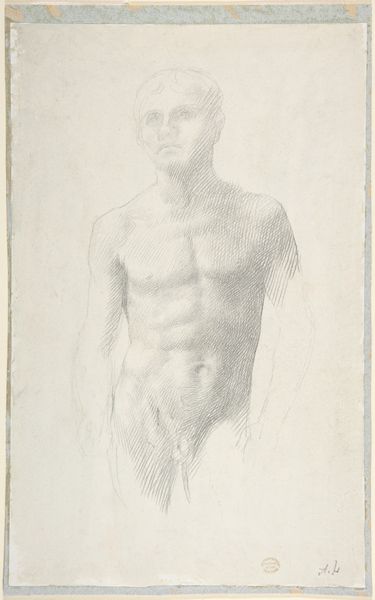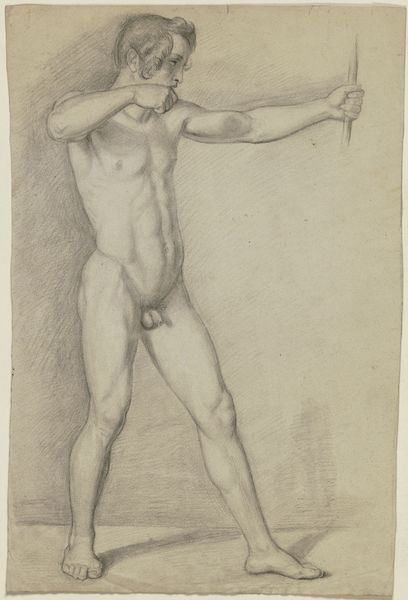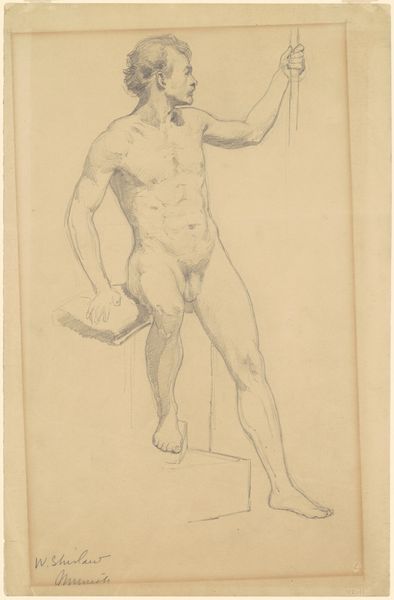
drawing, pencil
#
portrait
#
pencil drawn
#
drawing
#
pencil sketch
#
pencil drawing
#
pencil
#
portrait drawing
#
academic-art
#
nude
#
realism
Dimensions: overall (approximate): 41.1 x 27.5 cm (16 3/16 x 10 13/16 in.)
Copyright: National Gallery of Art: CC0 1.0
Editor: We’re looking at Alphonse Legros’s “Study of a Man's Figure, Holding Rod behind Back," done in pencil. The anatomical detail is striking, but it feels like more than just a study. It makes me think of academic training and maybe a bit of theatrical staging. What do you see in this piece? Curator: It’s fascinating how a seemingly simple study can reveal so much about artistic and social values. Consider the context: the late 19th century, where the male nude, particularly in this classically-inspired pose, was a staple of academic training. Its purpose was multifaceted. It demonstrates both an understanding of classical ideals of beauty, and the reinforcement of specific, mostly patriarchal, power structures within the art world itself, where these depictions are acceptable from a male gaze. It also suggests Legros’ own positionality within the system. Editor: So, the artwork is part of reinforcing a power structure? Curator: Precisely. While presented as a neutral exercise in skill, these studies often subtly promoted specific notions of ideal masculinity. Legros wasn't just studying anatomy, he was participating in a broader visual culture that used the nude to signify authority and control, primarily exercised by men who get to create such images. Editor: That gives me a lot to think about! It is more than just anatomical. I suppose every artwork really does communicate more than what we see on the surface. Curator: Absolutely. Considering the socio-political forces always helps reveal a richer understanding. Looking at "neutral" art and decoding how it is not, in fact, neutral, allows us to develop as critical viewers.
Comments
No comments
Be the first to comment and join the conversation on the ultimate creative platform.
